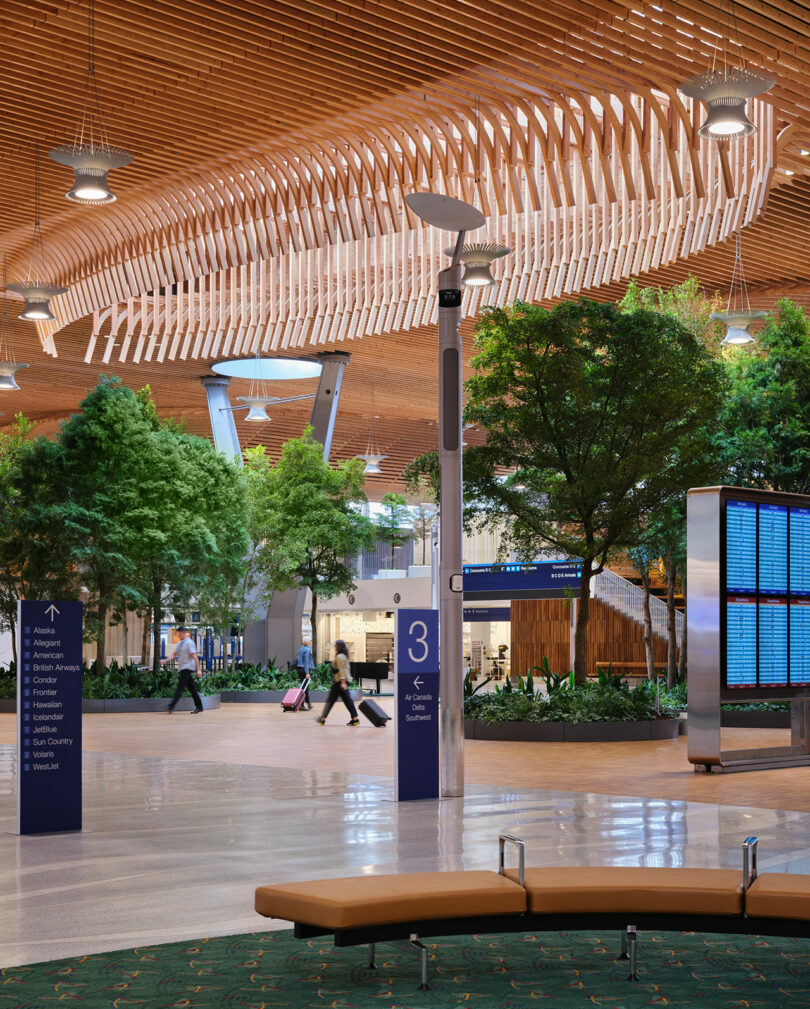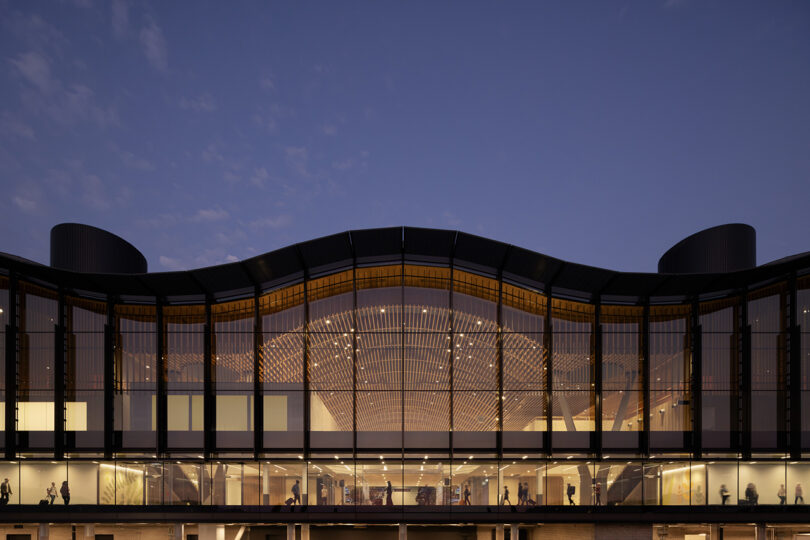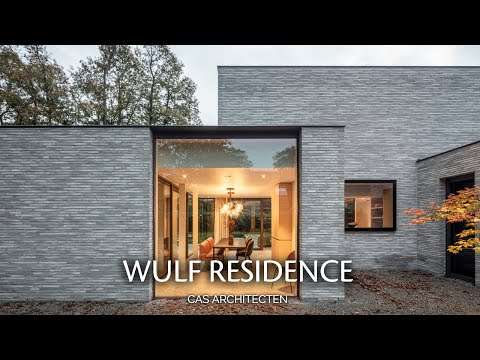As an alternative to concrete and other conventional composites, wood has re-emerged as a popular building material. Long thought of as too fragile and prone to damage, this natural resource has been re-engineered into a suite of fortified structural elements known as mass timber: glued, nailed doweled panels and beams able to shore-up everything from large residences to full-scale skyscrapers. The especially articulated roof of the recently expanded main terminal at Portland Airport (PDX) might be its most impressive application yet.

Photo: Ema Peter
Nationwide architecture firm ZGF implemented glulam (glue laminated) Douglas Fir for this massive nine-acre canopy, not only as an innovative and sustainable solution but also as a nod to local ecology and deeply-rooted cultural traditions. It’s a far cry from the standard glass and steel found at any other airport around the globe. The surrounding region is known for its dense old growth forests and thriving lumber trade. Most of the 3.5 million planks implemented in the project were sourced from smaller family operated and sustainably minded purveyors, as well as indigenous nations, based within a 300-mile radius; accounting for a notable reduction in the new building’s embodied carbon footprint.

Photo: Ema Peter
“With the new PDX, we wanted travelers to know they were in the Pacific Northwest before they even left the airport. And for locals, we wanted it to feel like home,” says Vince Granato, Chief Projects Officer at the Port of Portland. “Creating that sense of place started with ZGF’s spectacular design, which was brought to life by thousands of local craftspeople.”

Photo: Ema Peter

Photo: Dror Baldinger FAIA

Photo: Dror Baldinger FAIA
When it came to finding a way to expand this major hub “in place” rather than build entirely anew and cause significant distributions – the scourge of many other recent airport renovations – the Port of Portland authority called on ZGF to devise a phased construction strategy. Their solution was to create the expansive roof as a way of defining a significantly increased floor area without taking away from vital and well-utilized gates. This new single volume colossus also vastly ameliorates passenger experience; both in terms of practicality and atmosphere.

Photo: Dror Baldinger FAIA
The curvilinear installation is defined by a “forest” of open lattice structure slats that give way to concave recesses, which allows an ample amount of natural light to filter through. Inside, passengers engage with a series of streetscape and parkland-like plazas and fully-enclosed concessions before reaching their gates in one of four concourses. Biophilic design cues – the bringing of nature indoors as a means of fostering a better sense of well-being – can be found throughout. Everything from the flooring to the finishing in the individual hospitality spaces was also sourced locally. The canopy anchors large glass walls that frame unobstructed tarmac views and even the forests in the distance.

Photo: Dror Baldinger FAIA
“Everybody loves Portland International Airport,” concludes Gene Sandoval, ZGF Partner. “We had a tall order to evolve a terminal that’s essentially multiple buildings pieced together since the 1950s – and double the capacity while designing an experience passengers and employees will love as much as the original.”

Photo: Ema Peter

Photo: Dror Baldinger FAIA
The largest mass timber building of its kind, Portland Airport’s new main terminal raises the bar in site-responsive and sustainable airport design but also non-disruptive expansion. For the redevelopment of Chicago O’Hare Airport, noted architecture firm Studio Gang is taking a similar approach. The next phase of the PDX mass timber transportation is set for completion in 2026.

Photo: Ema Peter

Photo: Ema Peter

Photo: Dror Baldinger FAIA


Drawing: Courtesy of ZGF

Drawing: Courtesy of ZGF
To see this and other projects by the firm, visit zgf.com.
Photography by Dror Baldinger FAIA and Ema Peter as noted.





